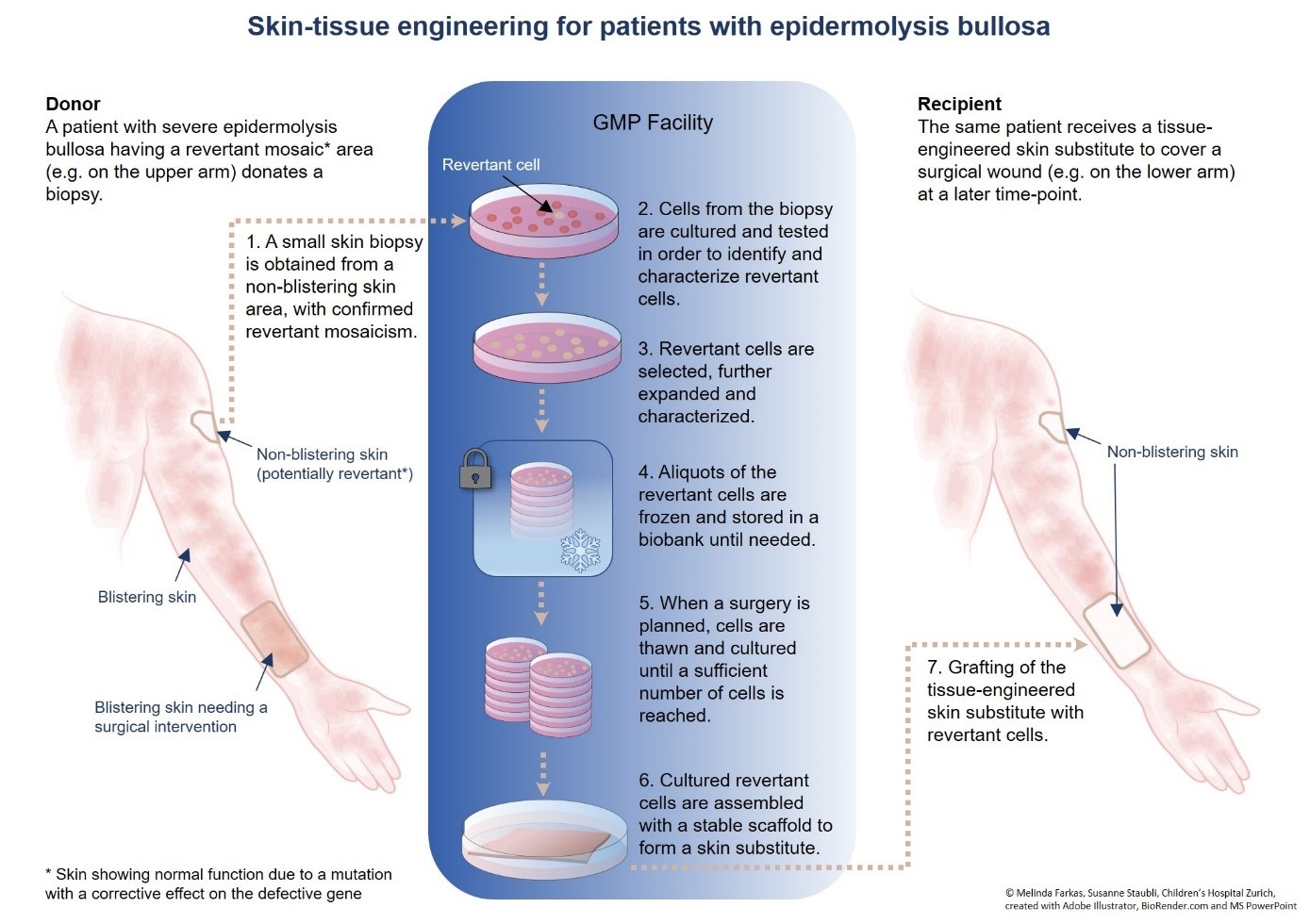Epidermolysis bullosa (EB)
Epidermolysis bullosa (EB) is a group of rare skin fragility disorders known to arise from mutations within the genes for basement membrane zone structural proteins. EB is diagnosed by skin biopsies and genetic tests and is classified into four main types each showing a varying degree of blisters following minor mechanical trauma or friction. Poorly healing blisters lead to fibrosis and can increase the susceptibility to life-threatening complications. Patients remain with frequent, lengthy, and painful dressing changes that have a daily physical and emotional impact. Although gene therapy as a curative approach is advancing for few subtypes, no satisfactory treatment exists so far. Due to naturally occurring arbitrary gene mutations in dividing skin cells, EB patients sometimes develop patches of skin, with corrected physiological functions, an thus, do not blister. This phenomenon is called revertant mosaicism and is often described as natural gene therapy.
By developing an autologous tissue engineered skin (skingineering), assembled from keratinocytes and fibroblasts cultured from a biopsy of a patient’s revertant mosaic skin area, a lifetime therapeutic solution for EB patients could be created. The planned research is based on our expertise in basic, translational, and clinical research leading to an efficient transition from bench to bedside.
